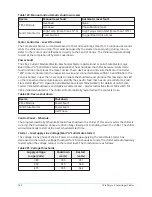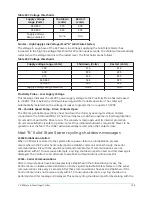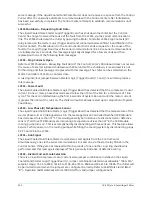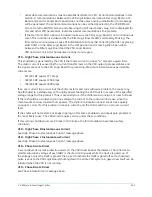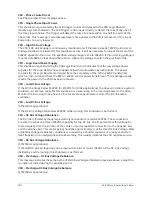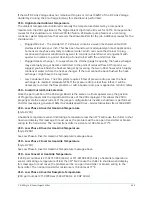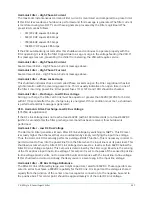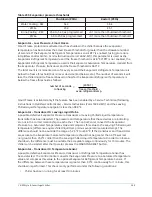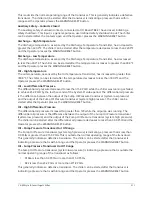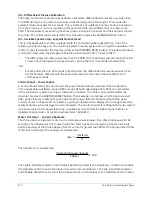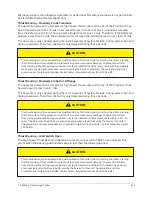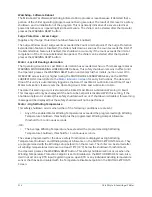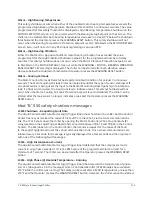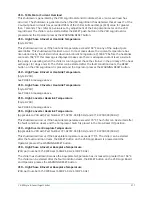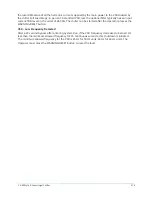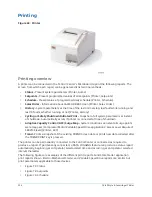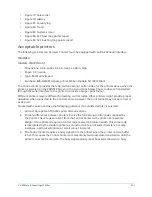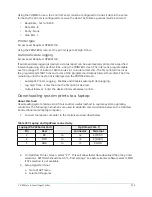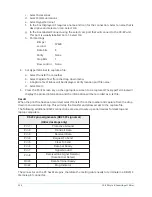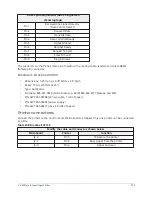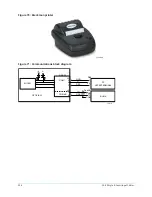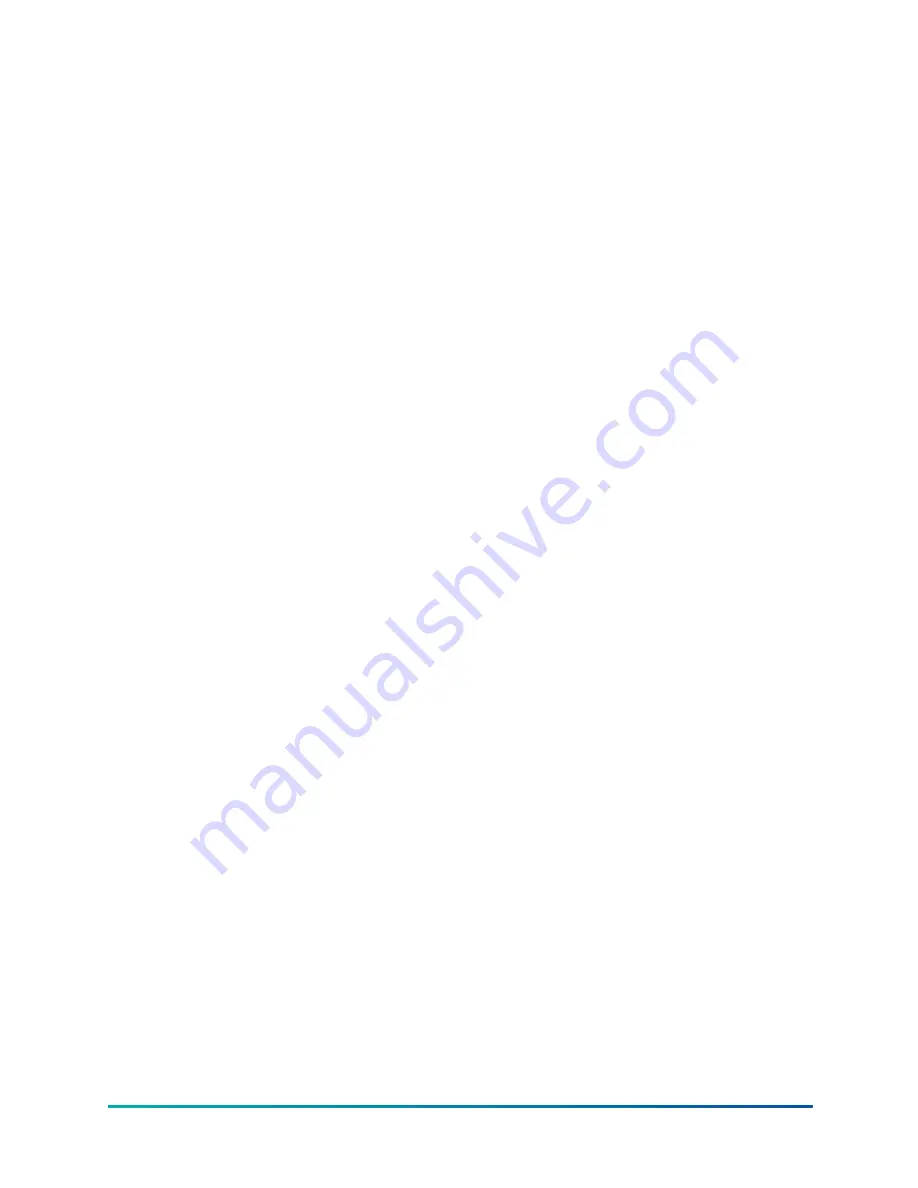
This is outside the normal operating range of the transducer. This is generally indicates a defective
transducer. The chiller can be started after the transducer is indicating a pressure that is within
range and the Operator presses the WARNING RESET button.
Auxiliary Safety – Contacts Closed
The Auxiliary safety shutdown contacts, connected to I/O Board TB4-31 have closed, initiating a
safety shutdown. This input is a general-purpose, user defined safety shutdown input. The chiller
can be started after the contacts open and the Operator presses the WARNING RESET button.
Discharge – High Temperature
The discharge temperature, as sensed by the Discharge Temperature Transmitter, has increased to
greater than 220.0°F. The chiller can be started after the temperature decreases to less than 220.0°F
and the Operator presses the WARNING RESET button.
Discharge – Low Temperature
The discharge temperature, as sensed by the Discharge Temperature Transmitter, has decreased
to less than 30.0°F. The chiller can be started after the temperature increases to greater than 30.0°F
and the Operator presses the WARNING RESET button.
Oil – High Temperature
The oil temperature, as sensed by the Oil Temperature Transmitter, has increased to greater than
180.0°F. The chiller can be started after the temperature decreases to less than 180.0°F and the
Operator presses the WARNING RESET button.
Oil – Low Differential Pressure
The differential oil pressure decreased to less than 15.0 PSID while the chiller was running or failed
to achieve 25.0 PSID by the last 5 seconds of the System Prelube period. The differential oil pressure
is the difference between the output of the Sump Oil Pressure transducer (system low pressure)
and the output of the Pump Oil Pressure transducer (system high pressure). The chiller can be
started after the Operator presses the WARNING RESET button.
Oil – High Differential Pressure
The differential oil pressure increased to greater than 120 while the oil pump was running. The
differential oil pressure is the difference between the output of the Sump Oil Pressure transducer
(system low pressure) and the output of the Pump Oil Pressure transducer (system high pressure).
The chiller can be started after the differential oil pressure decreases to less than 90.0 PSID and the
Operator presses the WARNING RESET button.
Oil – Pump Pressure Transducer Out Of Range
The Pump Oil Pressure transducer (system high pressure) is indicating a pressure that is less than
0.0 PSIG or greater than 315.0 PSIG. This is outside the normal operating range of the transducer.
This generally indicates a defective transducer. The chiller can be started after the transducer is
indicating a pressure that is within range and the Operator presses the WARNING RESET button.
Oil – Sump Pressure Transducer Out Of Range
The Sump Oil Pressure transducer (system low pressure) is indicating a pressure that is outside the
normal operating range of the transducer as follows:
•
R134a is less than 0.0 PSIG or more than 315.0 PSIG.
•
R22 is less than 23.2 PSIG or more than 271.8 PSIG.
This generally indicates a defective transducer. The chiller can be started after the transducer is
indicating a pressure that is within range and the Operator presses the WARNING RESET button.
211
YK-EP Style B Centrifugal Chiller
Summary of Contents for YK-EP
Page 2: ...2 YK EP Style B Centrifugal Chiller...
Page 6: ...6 YK EP Style B Centrifugal Chiller...
Page 227: ...Figure 72 Sample printout of Status 227 YK EP Style B Centrifugal Chiller...
Page 228: ...Figure 73 Sample printout of Status cont YK EP Style B Centrifugal Chiller 228...
Page 229: ...Figure 74 Sample printout of Setpoints 229 YK EP Style B Centrifugal Chiller...
Page 230: ...Figure 75 Sample printout of Setpoints cont YK EP Style B Centrifugal Chiller 230...
Page 231: ...Figure 76 Sample printout of Schedule 231 YK EP Style B Centrifugal Chiller...
Page 232: ...Figure 77 Sample printout of a Sales order YK EP Style B Centrifugal Chiller 232...
Page 233: ...Figure 78 Sample printout of a Sales order cont 233 YK EP Style B Centrifugal Chiller...
Page 234: ...Figure 79 Sample printout of History YK EP Style B Centrifugal Chiller 234...
Page 235: ...Figure 80 Sample printout of History cont 235 YK EP Style B Centrifugal Chiller...
Page 236: ...Figure 81 Sample printout of a security log report YK EP Style B Centrifugal Chiller 236...


